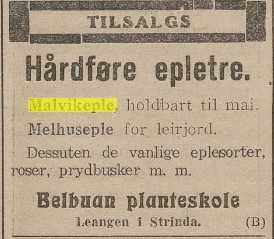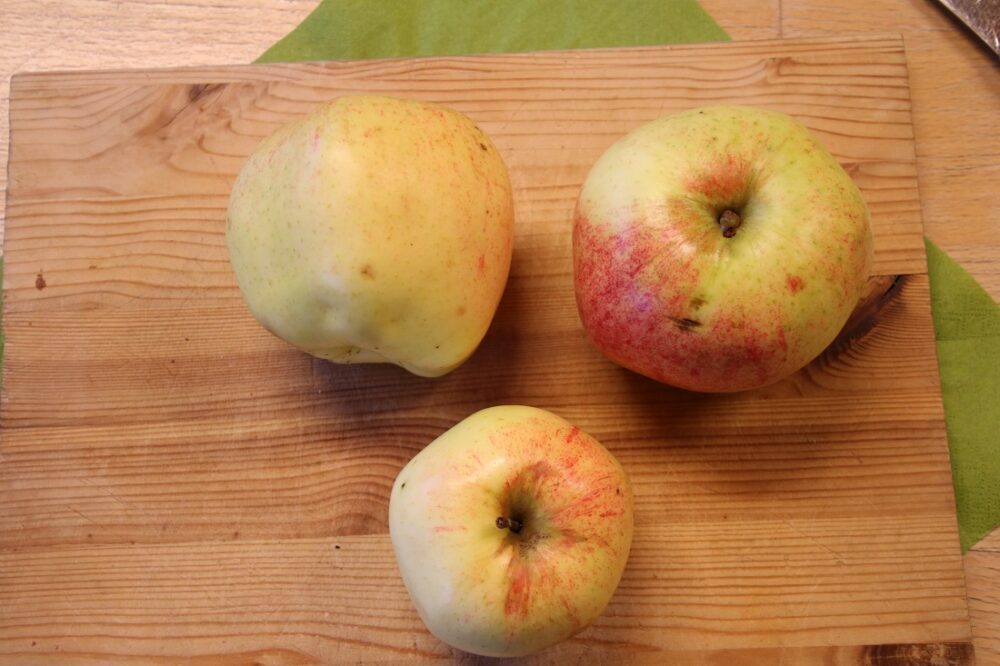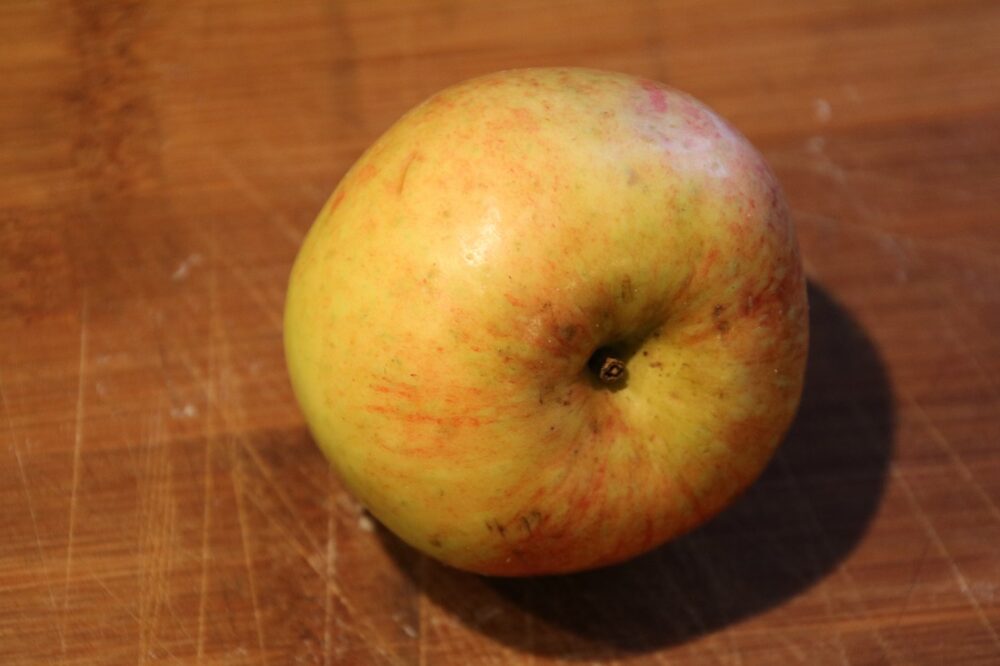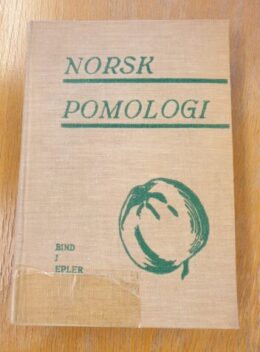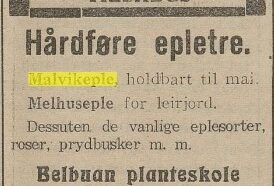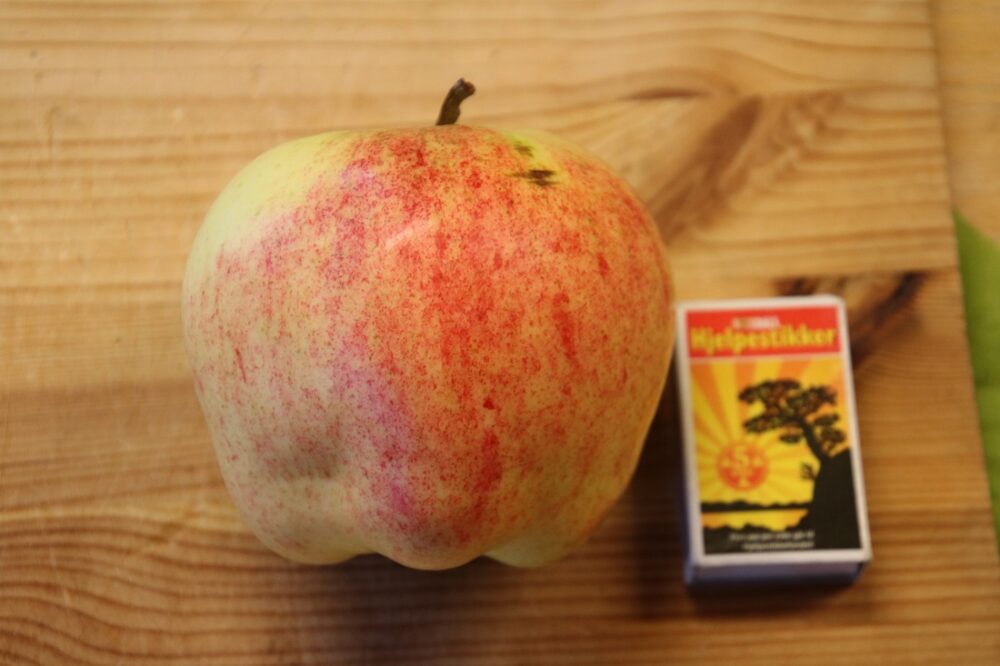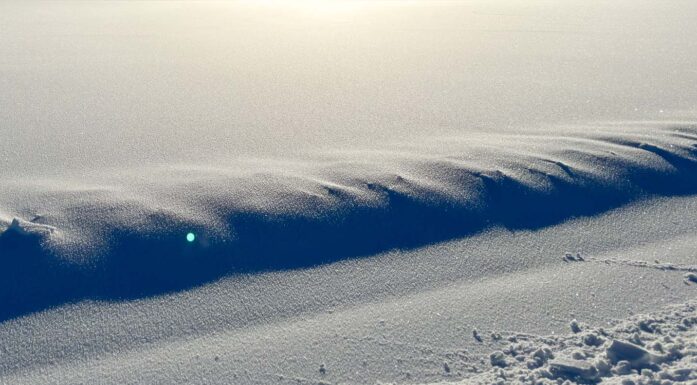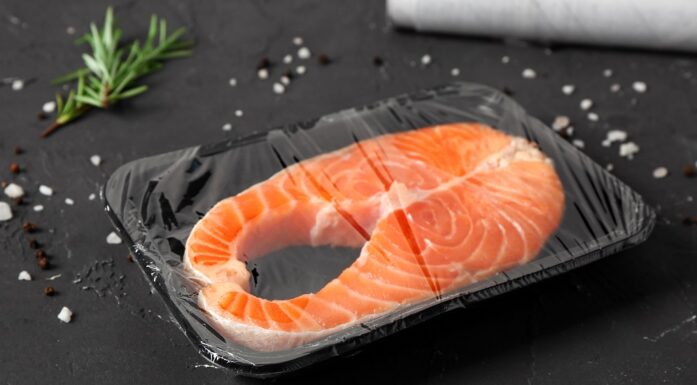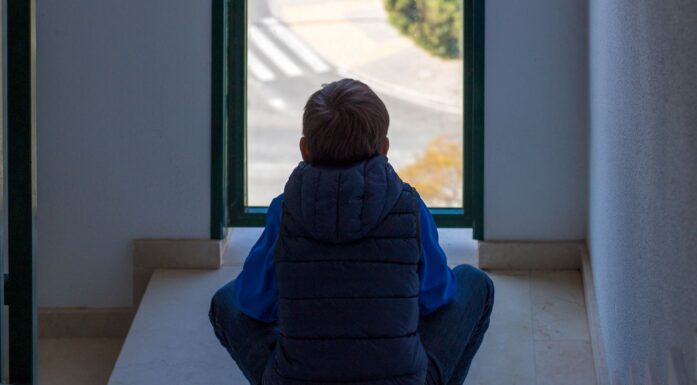The hunt for the Malvik apple
Finding old — and hardy — apple varieties was a challenge for the Trøndelag apple community.
It was actually the estate of the Belbuan Nursery at Strindheim that started everything off. The owner of the nursery, Jon Hjelde, had had a close relationship with Ringve Botanical Garden. When he passed away, the botanical garden was offered the opportunity to take whatever plants and books they wanted from the nursery.
“In the basement, we found several old gardening books – including ‘Norwegian Pomology: Volume I Apples’. This is a book from 1939 with an overview of Norwegian apple varieties,” explains Vibekke Vange, who is the general manager of Ringve Botanical Garden.
The book had been left lying in a crate until a November day in 2020, when Vibekke was investigating something about an apple variety. She opened the book and an old newspaper advertisement from 1942 fell out: “For sale: Hardy apple tree. Malvik apple, can be stored until May. Melhus apple for clay soil.” The advertiser was Belbuan Nursery.
If you are not part of Trøndelag’s hardcore gardening community, this might not be something that piques your curiosity – but for Vibekke Vange, her urge to find out more was aroused.
The Melhus apple and the Malvik apple are not documented in the official apple literature: They are not listed in ‘Norwegian Pomology’ from 1939 – or in any later editions.
- You might also like: Lemming years are important for far more than just predators
An idea begins to sprout
Perhaps it was the case, Vibekke thought, that there were Trøndelag apples that remained unknown to official sources? And, more importantly, were there any Malvik and Melhus apple trees that still existed today – or had they all disappeared in the decades that had passed since 1942?
She recalled a conversation she had had in 2012 with Arnfinn Vikhammermo, a local history buff from Malvik. He had mentioned that Ringve Botanical Garden should find and protect the Malvik apple. She had not taken it any further at the time, but in the following years, the garden had begun identifying old fruit and berry varieties at Midtsand Farm in Malvik.
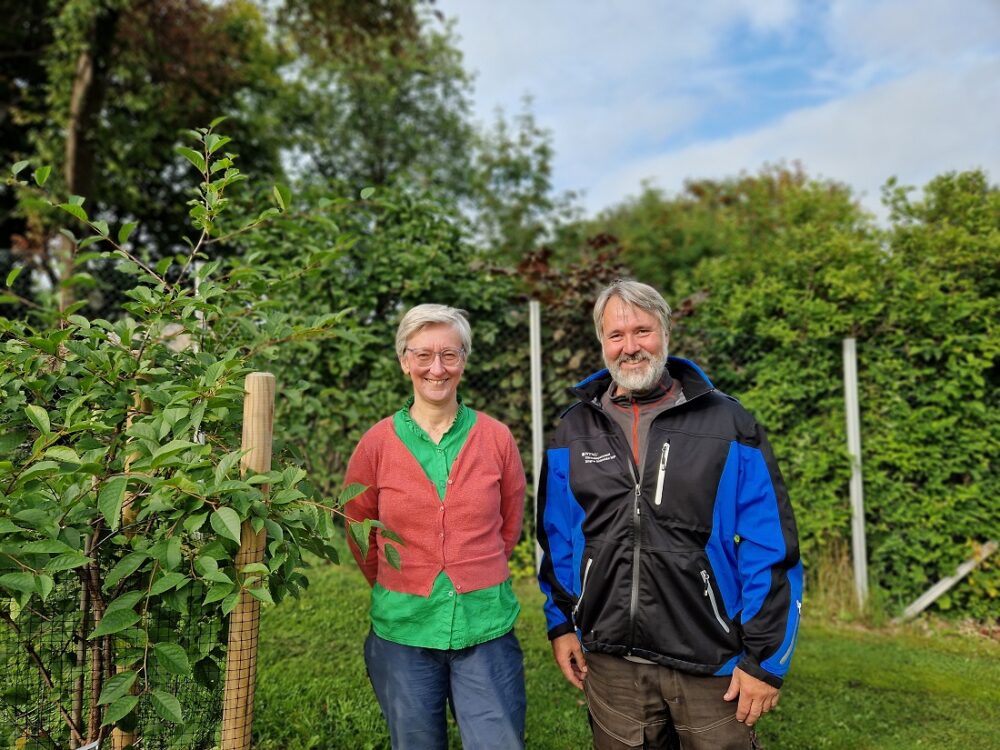
Associate Professor Vibekke Vange and gardener Stefan Patrick Nilsen collaborated with local enthusiasts. Photo: Frid Kvalpskarmo Hansen, NTNU University Museum
“In addition, we had become aware of even more old fruit and berry varieties through the association Friends of Ringve Botanical Garden,” explains Vange.
Therefore, when the advertisement from the 1940s fell out of the book from Belbuan Nursery, an idea began to sprout: Not only should Ringve Botanical Garden hunt down the Malvik apple; they should establish their own collection of Trøndelag fruit and berry varieties in the garden.
Apples in the Oseberg Ship
Nationally, relatively little documentation has been collected on fruit cultivation in Trøndelag, but a lot is known about fruit cultivation in Norway – stretching far back in time.
“Apples have been found in the Oseberg Ship from the 9th Century, and the Frostating Law from the 10th Century states that ‘Anyone who enters someone else’s nut forest or steals apples or hops from someone else’s property must pay a fine, and with regard to apples and hops, must also compensate for the value of what has been stolen’.”
This is according to Stefan Patrick Nilsen, a gardener at Ringve Botanical Garden. Together with Vibekke, he started to search for the Malvik apple – and eventually also the Melhus apple. Initially, however, the search bore very little fruit (pun intended).
“We visited several farms and drove up and down many hills in Malvik without finding a single Malvik apple tree,” says Vibekke.
However, a search of the National Library of Norway’s newspaper archives showed that both the Malvik apple and the Melhus apple were being traded in the 1930s and that there was great faith in Trøndelag apple cultivation. In 1937, the Malvik apple was even exhibited in Copenhagen at the Nordic Horticultural Exhibition. The origin of the apples is not easy to ascertain, but an article in the Nationen newspaper from May 1939 speculates on an unknown source:
“It is hard to say where the Malvik apple originates from. The seed may have come from somewhere in America, and the only thing known is that it was planted in a garden at Være in Strinda, and this is where the man from Brandli had acquired his tree.”
Brandli and Skansen
Brandli Farm is still in operation, and Stefan Patrick and Vibekke jumped at the opportunity to get hold of one of the most ‘original’ Malvik apple trees. For Ringve Botanical Garden, it is important to know the origin of the plants they take care of in the garden, so that both the genetic origin and the plant’s cultivation history are known and safeguarded for posterity. “When we arrived at Brandlia, however, it turned out that all the apple trees had been cut down,” says Vange.
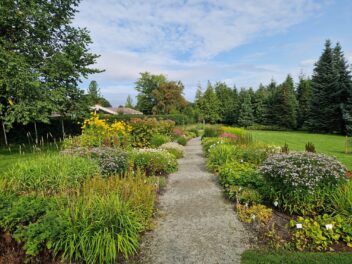
The old garden at Ringve Botanical Garden. Preserving old fruit varieties. Photo: Frid Kvalpskarmo Hansen, NTNU University Museum
It was good that local history enthusiast Arnfinn Vikhammermo had made the Malvik apple a cause close to his heart. He had been featured in the local newspaper Malvikbladet, calling for the preservation of the Malvik apple back in 2012. Gunnar Skansen had contacted him and told him that he had an apple tree that was definitely of the Malvik apple variety on his farm at Skansen.
“Gunnar Skansen had also been interviewed in the Malvikbladet newspaper and described that the tree was planted before 1950, and that Skansen’s father had told him that the tree had originally come from Naustan Nursery in Malvik. And so, we had proof that several local nurseries had sold Malvik apple trees.”
When Vibekke and Stefan Patrick visited Skansen Farm in 2020, Gunnar Skansen was no longer alive – however, the Malvik apples were still there.
“From there, we obtained grafting twigs, which have now been planted in the garden,” says Vibekke Vange.
“We have not found any apples similar to this in the documentation we have reviewed. It is not an official variety, but we can call it a local variety of apple, which seems to be unique to our region,” says Vange.
A cultural history collection
At Ringve Botanical Garden, the Malvik apple is now accompanied by the Melhus apple (which Vibekke and Stefan Patrick collected from a property at Vikhammer in Malvik), the Foldvik plum, the Frosta plum, the Frosta cherry, sour cherries, several types of gooseberries, red currants, black currants and raspberries.
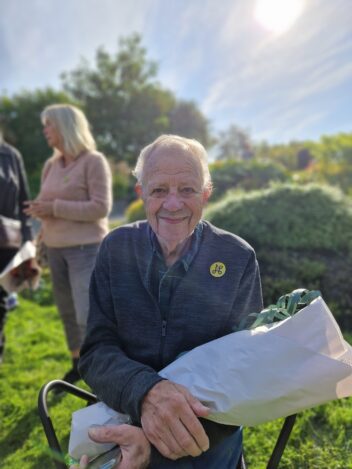
“Experiencing this is absolutely amazing. However, there are still many local varieties out there that must be taken care of!” says Arnfinn Vikhammermo. Photo: Frid Kvalpskarmo Hansen, NTNU University Museum
The specimens that comprise the newly opened fruit and berry collection have been collected from farms such as Ringve and Midtsand and from private gardens. In addition, some of the apple varieties are associated with Staup and Hylla horticultural schools and former commercial apple production.
“In addition to preserving these varieties, we have collected their history. For example, the Frosta plum and the Frosta cherry are listed as relics from the 13th Century monastic period at Tautra in Frosta Municipality,” explains gardener Stefan Patrick Nilsen.
“These varieties have been spread through root suckers being propagated over generations, and they are still the most common fruit trees on old farms in Frosta Municipality. We have received our plants as root suckers from Berit and Armand Fossli at Vigtil Nordre Farm.”
The fruit and berry collection was officially opened on 6 September, and it goes without saying that Arnfinn Vikhammermo was one of the first guests through the door.
“Experiencing this is absolutely amazing. However, there are still many local varieties out there that must be found and preserved!” says Vikhammermo.
